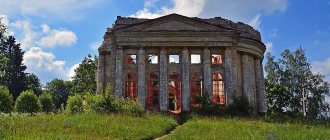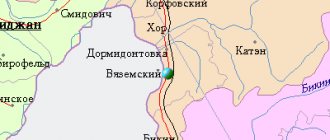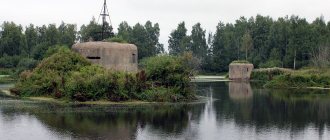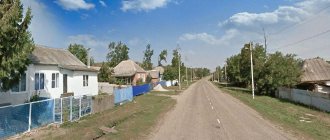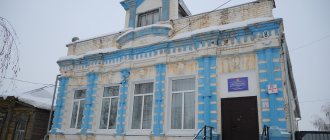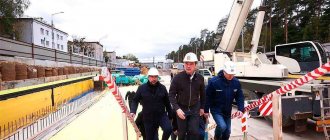Tourists often call Chistopol an “open-air museum.” Chistopol is located on the picturesque left bank of the Kama, about 140 kilometers from Kazana. In the former merchant city, historical buildings are still preserved, in which ancient mansions of wealthy citizens and Orthodox churches occupy an important place. One of them, the white stone Cathedral of St. Nicholas the Wonderworker, is rightfully considered the architectural dominant and symbol of the city.
The concept of “Clean Field”, which gave the city its name, was not born in these parts by chance. Archaeologists find settlements of ancient Bulgars here, and the village of Arkhangelskaya Sloboda, often called Clean Field, was mentioned in written sources already at the end of the 17th - beginning of the 18th century.
The village on the site of the future Chistopol was founded by serf peasants from among the fugitives who settled here en masse, then the schismatics exiled here joined them. They were going to organize a free settlement of co-religionists on the banks of the Kama. The first inhabitants called their new homeland Clean Field, since it was the empty fields and forests that first appeared before their eyes. At first, residents lived by hunting and fishing, but agriculture also quickly developed.
However, the lands here were state-owned, and the state was not going to put up with their unauthorized seizure, to which for the time being it turned a blind eye. The tsarist troops who arrived here destroyed and burned the settlement of the fugitives, leaving the same original “open field” in place of the village. New residents soon began to settle in - the sovereign's peasants sent here. The settlement was rebuilt again along with the former fugitives, who, for various reasons, survived the punitive expedition and avoided further exile. In the middle of the 18th century, a village already existed here again, even larger than before, and its inhabitants preferred to engage mainly in trade.
According to the census, by 1761 the number of residents of Chisty Pole exceeded a thousand people. Twenty years later, by decree of Empress Catherine II, the village was given the status of a district town of the Kazan governorate (since 1796 - a province). The newly created city began to be called Chistopol.
Coat of arms of Chistopol
On October 18, 1781, the city coat of arms was also approved with the official description: “In the upper part of the shield is the coat of arms of Kazan. At the bottom there is a golden, branded quadrangle in a green field, as a sign that a great trade in all kinds of grain is taking place in this new city.”
It was not by chance that the four-piece became the basis of the composition: already in the 19th century, Chistopol was considered the unofficial grain capital of the Kama region, and the four-piece was a universal measure for weighing grain - 26.24 liters.
The modern appearance of the Chistopol coat of arms has retained its historical roots and still features an empty bread square.
What monuments in Chistopol are worth visiting?
Chistopol monuments, monuments and memorials tell a lot of interesting things about the history of the city.
Monument to B. Pasternak
- Address: Skaryatinsky Garden.
Opposite the house of the B. Pasternak Memorial Museum, in the Skaryatinsky Garden, there is a monument to the writer. It was opened in 2015 on the occasion of the 125th anniversary of the author's birth. A three-meter bronze sculpture depicting young Boris Pasternak is the work of Moscow sculptors V. Demchenko and A. Golovachev.
Memorial complex "Alley of Heroes"
- Address: intersection of K. Marx and Babel.
In 1968, a monument dedicated to the Great Patriotic War was opened in Chistopol. In memory of the fallen soldiers, the Eternal Flame burns here. The central figure of the composition is a soldier; his sculpture was created by master I. Romanov. By 1975, a “Walk of Fame” appeared next to the monument, consisting of steles with the names of Chistopol heroes.
Thus, the final architectural appearance of the memorial complex in memory of the Great Patriotic War, which received the name “Alley of Heroes,” was formed. In addition to Ivan Romanov, sculptors Vladimir Skorokhodov, Pavel Samoilov and designer Ivan Chupaev took part in the creation of the complex.
Monument to the fighters for the establishment of Soviet power
- Address: intersection of Tolstoy and Marx streets.
The Monument to the Fighters for Soviet Power attracts attention with its composition. It was opened in 1957 on the site where the dead Bolsheviks were buried. The inscription on the pedestal: “Eternal glory to the fearless, faithful sons of the Motherland” is meaningful, does not give away “Soviet” content, and looks modern. The author of the monument is the famous Kazan sculptor I.A. Novoselov.
Becoming Chistopol a district town
From now on, Chistopol became a district town, and this title implied the mandatory presence of a representative Orthodox cathedral in it.
Three years - that’s exactly how long it took to finally confirm the status of Chistopol as a district Russian city with the construction of a magnificent white-stone cathedral on the high bank of the wide and deep Kama. The three-altar brick cathedral in the name of St. Nicholas of Myra was designed in the traditions of Russian classicism.
The construction of a large cathedral required considerable funds. The money was donated by Chistopol merchants and entrepreneurs known for their charitable activities.
Administrative and municipal status[edit]
As part of the administrative divisions, Chistopol serves as the administrative center of the Chistopol District, even though it is not part of it. [1] As an administrative division, together with one rural settlement (Eryklinsky village), it is included separately as the city of republican significance of Chistopol
- an administrative unit with a status equal to that of districts.
[1] As a municipal division, the city of republican significance of Chistopol is included in the Chistopol municipal district of the Urban Settlement of Chistopol
. [4]
Chistopol is a city of grain!
Chistopol very soon gained leadership in the Kazan province in the grain trade, selling grain both in Russia and abroad. The leaders of the grain trade in the city were the merchant dynasties of the Chukashevs, Chelyshevs, and Poduruevs; the famous Chistopol merchant of the 1st guild, Pyotr Shashin, supplied grain to the country's military department. It is no coincidence that the golden quadrangle depicted on the local coat of arms is equipped with a branded double-headed eagle: the grain trade is a state matter!
By the end of the 19th century, Chistopol had become a major grain trading center on an all-Russian scale thanks to the skillfully managed business and the use of technical means of production and transportation. Already in 1832, the city flour mill here was equipped with a steam engine, and leading entrepreneurs from wealthy merchant dynasties had their own river fleet on the Kama, including steamships.
Chistopol of the 19th century was a city not only of local entrepreneurs, but also of merchants who arrived from neighboring Kazan, Samara and even from St. Petersburg.
At the beginning of the 20th century, a trading exchange will be created in Chistopol for the convenience of commercial transactions, and Nicholas II himself will approve its charter.
History of the Chistopol region in the biographies and destinies of its leaders
October 12, 2021 Off
Category: Research work
To the 100th anniversary of the Republic of Tatarstan
To the 90th anniversary of the Chistopol region
“History of the Chistopol region in the biographies and destinies of leaders”
2020 in the Republic of Tatarstan has been declared the “Year of the 100th anniversary of the formation of the Tatar Autonomous Soviet Socialist Republic.” One hundred years ago, on May 27, 1920, the All-Russian Central Executive Committee and the Council of People's Commissars of the RSFSR adopted a decree on the formation of the Tatar Autonomous Soviet Socialist Republic (TASSR). This same year marked the 90th anniversary of the formation of the Chistopol region. All these years, the Chistopol region has been following the same path as the Republic of Tatarstan, continuing historical traditions and making a worthy contribution to the strengthening and prosperity of the country. Together with the republic, the region survived the revolution, civil war, industrialization and collectivization, the years of the Great Patriotic War, raised the national economy, developed socialism, experienced the collapse of the Soviet Union and the transition to market relations. This time was permeated with a palette of different feelings: tears of joy and sorrow, pride and despair - all this today forms part of our common collective memory.
1st Secretary of the District Committee A.M. Novoselov
In honor of the glorious anniversaries, the Chistopol State Historical, Architectural and Literary Museum-Reserve opens a series of publications dedicated to the biographies and destinies of the leaders of the Chistopol region of the Soviet period.
Chistopol district was formed on August 10, 1930. According to the new administrative division, it included 19 volosts. In connection with zoning, the territory of the former Chistopol canton was divided into Aksubaevsky, Alekseevsky, Bilyarsky, Novosheshminsky, Oktyabrsky, Pervomaisky and Chistopolsky districts. In 1935, the Kzyl-Armeysky district with its center in the village of Kargali was separated from the Chistopol district, which existed until 1958.
Over the entire period of existence of the Chistopol district, there were 26 people at the helm of management. Despite their previous merits and high positions, five leaders of the pre-war period were subjected to repression. Two of them were sentenced to capital punishment. Among them are the very first head of our district, Gerasim Mikhailovich Shemetov, and a former laborer at the Alafuzov factory, Vasily Fedorovich Anisimov, who shortly before his arrest took the post of People's Commissar of the Food Industry of the TASSR.
In 1940, Arkady Mikhailovich Novoselov, sentenced to five years in the labor camp, died in Sevvostlag. His career evolved from a stamp dealer on the Perm pier to deputy chairman of the Council of People's Commissars of the TASSR.
Kuzma Antipovich Vorobyov, at the time of his arrest, the Deputy People's Commissar of Agriculture of the TASSR, and Grigory Ivanovich Flegontov, who was removed from the post of First Secretary of the Chistopol District Committee of the All-Union Communist Party of Bolsheviks, managed to avoid a terrible fate by a happy accident. Their cases were dismissed for lack of proof of guilt.
Our leaders walked the harsh roads of the front and worked valiantly in the rear. Among them is the Hero of Socialist Labor - Grigory Grigorievich Polyushchenkov. In 1943, he was drafted into the Red Army, and from March 1944 he commanded an artillery platoon. He is still remembered and respected by Chistopol residents; he worked in the district and city party committees for almost 30 years. Home front workers: Efim Yakovlevich Matveev, Abbas Suleimanovich Kashaev, Shamil Shakirovich Sidaev, Ivan Lukoyanovich Kiyaev and others.
Years of the first five-year plans
By the beginning of the 1930s. An active movement for complete collectivization began in the republic. The process of transferring peasants to collective farms was practically completed by the end of 1934. This is a time of unprecedented success in the national economy. The Park tractor colony, equipped with 26 Fordson-Putilovets tractors, entered the fields of our region.
Leningradsky's tractors have become one of the most striking symbols of the “tractorization” of our country. In total, over the period 1924–1933, the plant produced over 36 thousand agricultural machines. The appearance of a tractor in the village became an epoch-making event in the life of many regions of the country, and, of course, was recorded in the annals of many settlements. Girls sat behind the wheel of iron horses. One of them is V.E. Potasyeva is the first female tractor driver of the Chistopol MTS. In 1934 she was awarded the badge “Best Plowman-Drummer”.
In 1932, the Chistopol district was the first in Tatarstan to fulfill the grain procurement plan and handed over one million poods of grain to the state. Rural workers were awarded the banners of the Council of People's Commissars of the TASSR and the Regional Committee of the CPSU (b). In 1933, a new victory was won in the struggle to further increase agricultural production - spring sowing in eight days. The Chistopol district received the challengeable Red Banner of the Republic and became “Red Banner”. Agriculture developed at a rapid pace. Since 1933, harvesters began to be used in the fields of the region. To increase productivity, correct crop rotation, plowing, early fallow, row sowing, field fertilization, snow retention, extra-early and winter sowing, and sowing with vernalized seeds were used. The area was served by two MTS (machine and tractor stations), located in the city of Chistopol and the village. Kargali.
Powerful development in the 1930s. received the city's industry. Workers were among the first in Tatarstan to join socialist competition. From the production of horse-drawn threshers, drives, and repair of agricultural machinery in 1934, the company moved to more complex types of production. Thus, the production of printing presses of the "agitka" ("American") type was mastered.
In the backwater, new buildings of the ship repair plant were built, timber and alcohol were discovered, and a power plant with a capacity of 9 thousand kilowatts was put into operation.
For the young Tatar Republic, the city of Chistopol was a kind of personnel forge. Many leaders of district and republican significance began their careers in the Chistopol district. More than a dozen party workers are graduates of the Chistopol Soviet Party School. This educational institution appeared in the city in 1921. The main task of Soviet party schools was to train workers of all lower party, Soviet and professional cells and authorities. The curriculum in the Soviet Party schools was based on the curriculum and programs of the Glavpolitprosvet. In June 1925, the Chistopol Soviet Party school was reorganized into a district school and became known as the “Chistopol District Soviet-Party School of the 1st level under the Tatglavpolitical Prosvet.”
During the pre-war decade, the district changed 6 leaders. Reshuffling of personnel in the party administrative apparatus was a common occurrence of that time. First secretaries received new appointments approximately every two years.
In 1930, Gerasim Mikhailovich Shemetov (1898–1938), who already had experience in leadership work, was appointed to the post of first secretary of the Chistopol district committee of the CPSU(b). He worked in Chistopol since 1928, and was a member of the presidium of the KIK (cantonal executive committee). G.M. Shemetov was born in the Moscow region. In 1925, he arrived in the TASSR to mobilize the Central Committee “to the tune of a thousand”: to strengthen the party line and collective farm agitation in the countryside. At first he worked as an instructor in the Laishevsky district committee, then, due to zoning, he was transferred as a secretary to the Prigorodny district committee of Kazan, which he had to organize from scratch. Gerasim Mikhailovich had brilliant organizational skills and actively fought against those who deviated from the general line of the party. As a talented manager, he enjoyed great authority and popularity among workers and peasants, both communists and non-party people. His frequently used verb is “to provide.” It was with his light hand that public cleanup days became mandatory in the city. No one could evade these events.
Shemetov led the Chistopol district for a short time - from August 1930 to February 1931. After his success was noticed at the regional level, the first secretary's career quickly took off. In Kazan, Gerasim Mikhailovich was appointed to the post of chairman of the Tatkolkhoz Union, was among the members of the bureau of the Kazan City Committee and candidates for membership in the bureau of the Tatkolkhoz Party Committee. In 1933, Shemetov was mobilized for leading party work in Eastern Siberia, where he had to pull up the lagging region and fight mismanagement and fraud. From the end of 1933 to 1935, he worked as the first secretary of the Krasnoyarsk city committee of the CPSU (b). Convicted in 1938 under Article 58, paragraphs 7,8.1. Sentenced to capital punishment. Rehabilitated on November 28, 1956.
In March 1931, the Chistopol district was headed by Arkady Mikhailovich Novoselov
(1905–1940). He was transferred to Chistopol from the city of Spassk, where for several years he worked as secretary of the volkom (volost committee) of the Kuznechikha volost, then as secretary of the Spassky cantcom of the CPSU(b). A.M. Novoselov was born in the village. Nizhnyaya Kurya, Perm province, in the family of a water transport worker. After graduating from ship mechanics school, he worked on steamships and dredging machines as a fireman and oiler. Since 1925 he was at party work in Spassky Canton. The new leader paid close attention to solving problems in the field of agriculture. “A good harvest is where they work well.” During his leadership from 1931 to 1933. Chistopol residents retained their primacy in the Republic, proudly holding the Red Banner, won through labor, over their heads.
In 1934 A.M. Novoselov was invited to work in the Tatar Regional Committee for the position of head of the agricultural department of the All-Union Communist Party (Bolsheviks). Then for several years he served as deputy chairman of the government of the Tatar Republic. ( A. M. Novoselov was the deputy chairman of the Council of People's Commissars of the TASSR - Kiyam Alimbekovich Abramov. Tortured on the "Black Lake" and executed in April 1938
).
Arrested on April 8, 1938 on charges of “participation in a right-wing Trotskyist organization and sabotage activities in agriculture.” Convicted on January 17, 1940 and sentenced to 5 years in labor camp. He died on October 27, 1940 in the notorious Nagaev Bay, before reaching the place where he was serving his sentence. During the period of mass Stalinist repressions, Nagaev Bay was used as a transit point for prisoners newly arrived by sea to be sent further along the stage to the camps of Magadan and Kolyma.
In August 1934, a new leader was sent from the Kazan Regional Committee - Vasily Fedorovich Anisimov
(1896–1938). An experienced Bolshevik, a participant in the Civil War with 14 years of party experience behind him. V.F. Anisimov was born in the village of Romodan, Spassky district, into a poor peasant family. From the age of 16 he worked as an apprentice at the Alafuzov textile factory in Kazan. After serving in the army, he returned to his native village, where he worked as chairman of the volost executive committee. In 1918, he was listed as a political prisoner of the White Czechs. After the Civil War, Vasily Fedorovich worked in the Spassky Cantcom. In 1928 he graduated from the 3rd year of the Sverdlovsk Communist University in Moscow, worked in various regional party organizations, including in Chistopol - from 1928 to 1929, where he was in charge of the cultural and propaganda department.
V.F. Anisimov led the Chistopol region until the spring of 1937. In April 1937, he headed the People's Commissariat of the Food Industry of the TASSR. In the Republic, meanwhile, as throughout the country, repressive measures began to take a catastrophic turn: arrests were carried out en masse of the leaders of party, Soviet and Komsomol bodies, directors of factories and other institutions. Six months later, it was the turn of People's Commissar Anisimov. He was arrested on charges of participation in a right-wing Trotskyist nationalist organization. On May 10, 1938, he was convicted by the Military Collegium of the Supreme Court of the USSR and sentenced to death. Rehabilitated in January 1957.
To be continued
Yulia Gavrilova, researcher at the City History Museum
Photos provided by ChGIILMS funds
- Tractor colony "Park". Chistopol. 1930
- Graduates of the Chistopol Soviet Party School. Chistopol. Ser. 1920s Modern st. Lenina, 64. Building of MBOU "Gymnasium No. 2"
.
- Bureau of the Chistopol District Committee of the All-Union Communist Party (Bolsheviks). Chistopol. 1930 3rd from left – first secretary Gerasim Mikhailovich Shemetov.
- First Secretary of the Chistopol District Committee of the All-Union Communist Party (Bolsheviks) Arkady Mikhailovich Novoselov. Photo from the newspaper “Prikamskaya Communa” dated January 14. 1934
Plan for regular development of Chistopol
Emperor Nicholas I approved the first regular plan for the development of Chistopol back in 1829. According to this plan, Chistopol, until the beginning of the 20th century, was rebuilt in both directions along the Kama, on the banks of which stood the Cathedral of St. Nicholas the Wonderworker, as well as in the southern direction, from where the main trade roads led to the city.
The scheme of such urban development was already familiar to the Volga and Kama regions: clear and regular parallels of streets, coupled with the strict geometry of intersections. The central street of Chistopol, Ekaterininskaya (the current Karl Marx Street), included the main city facilities, such as the post office, telegraph, police stations, local zemstvo institutions, treasury buildings and the most representative banks. Also here were the buildings of educational institutions - a girls' gymnasium and a primary school, and two churches framed the central street of the city. It started right from St. Nicholas Cathedral, and ended at the Kazan-Bogoroditskaya Church, called the cemetery by the townspeople.
The richest Chistopol merchants, such as the Chelyshevs, Chukashevs, and Poduruevs, preferred to build their mansions on Ekaterininskaya.
Links[edit]
Notes[edit]
- ^ abcdefg Order No. 01-02/9
- ^ abc Federal State Statistics Service (2011). “All-Russian Population Census 2010. Volume 1" [All-Russian Population Census 2010, vol. 1]. All-Russian Population Census 2010 [All-Russian Population Census 2010]
. Federal State Statistics Service. - "26. The size of the permanent population of the Russian Federation by municipalities as of January 1, 2021". Federal State Statistics Service. Retrieved January 23, 2021.
- ^ abcde Law No. 44-ZRT
- "On the Calculation of Time". Official Internet portal of legal information
. June 3, 2011. Retrieved January 19, 2021. - Post office. Information and computing center of OASU RPO. ( Post office
).
Search for postal service objects ( postal Search for objects
) (in Russian) - ↑
Federal State Statistics Service of Russia (May 21, 2004).
“The population of Russia, the constituent entities of the Russian Federation as part of federal districts, urban settlements, urban settlements, settlements, settlements of 3 thousand or more people” [Population of Russia, its federal districts, federal districts, districts, urban settlements, rural settlements - administrative centers and rural settlements with a population of more than 3000] (XLS). All-Russian Population Census of 2002 [All-Russian Population Census of 2002]
. - “All-Union Population Census of 1989. The current population of union and autonomous republics, autonomous regions and districts, territories, negative phenomena, urban settlements and rural district centers” [All-Union Population Census of 1989: current population of union and autonomous republics, Autonomous regions and districts , territories, regions, districts, towns and villages performing the functions of district administrative centers. All-Union Population Census of 1989 [All-Union Population Census of 1989]
.
Institute of Demography of the National Research University: Higher School of Economics [Institute of Demography of the National Research University: Higher School of Economics]. 1989 - via Demoscope Weekly
. - “All-Union Population Census of 1979. National composition of the population by regions of Russia” [All-Union Population Census of 1979. Ethnic composition of the population by regions of Russia] (XLS). All-Union Population Census of 1979 [All-Union Population Census of 1979]
.
1979 - via Demoscope Weekly
(website of the Institute of Demography of the State University - Higher School of Economics. - https://www.idelreal.org/a/28510391.html
